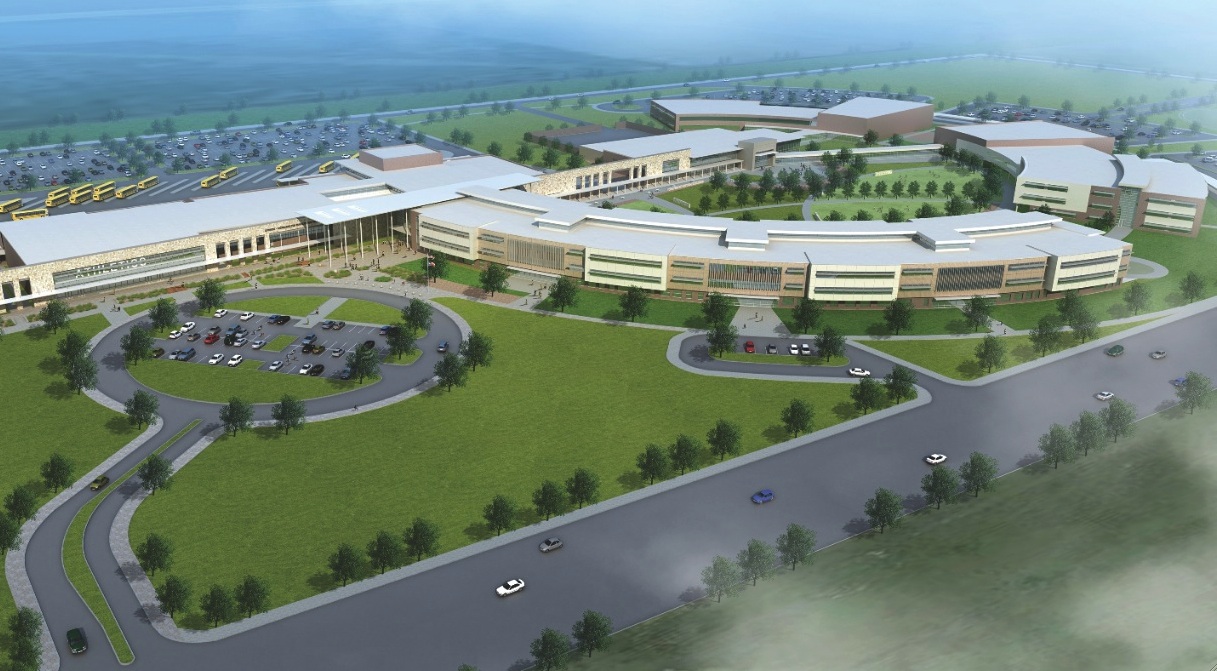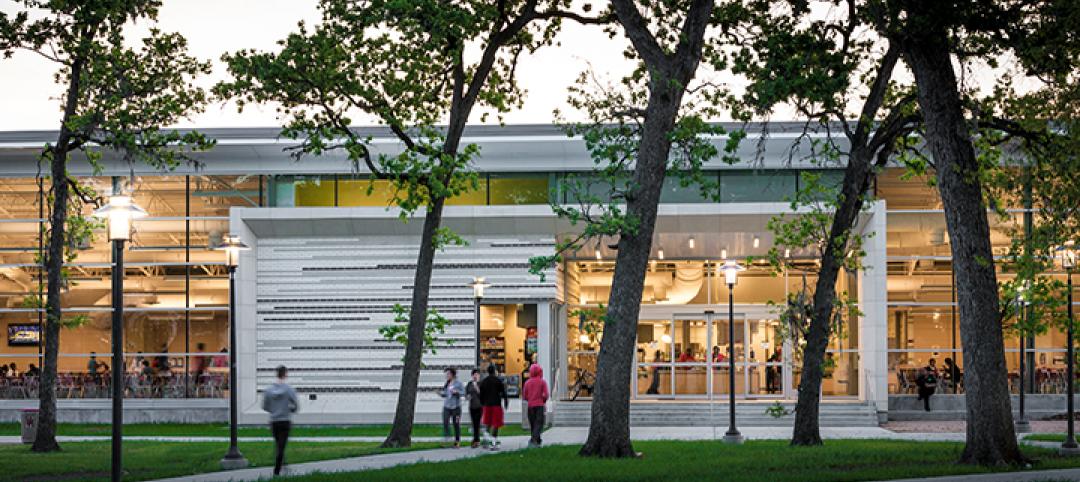Financing for school construction depends primarily on local bond referenda, so it’s difficult to make a blanket statement about national trends. However, Paul Abramson, Education Market Analyst for the School Planning & Management magazine, has estimated that school spending for project completions of construction, additions, and renovations hit $14.1 billion in 2014, or 5.4% more than the previous year.
AEC professionals say that, on a case-by-case basis, individual projects are being adequately financed. But many districts are struggling to have new construction and renovation keep pace with student population growth.
Montgomery County, Md., has seen its student count increase by nearly 12%, to 154,230, since 2007. More than 9,000 students are being taught in portable classrooms. The district expects its student count to reach 165,358 by 2020, according to the Washington Post. District Superintendent Joshua Starr has asked for $221 million to be added to the district’s six-year capital improvement budget, which would bring it to $1.75 billion.
“There are five million PK-12 students in Texas, and we’re gaining 100,000 students per year, which translates into a need for 100 campuses.” — Dan Boggio, President/CEO, PBK
In California, there’s a $2 billion backlog in applications for school-construction assistance from districts around the state, according to the Sacramento Bee. In January, construction and home-building groups launched a campaign to get a $9 billion school bond on California’s November 2016 ballot.
In other parts of the country, communities are backing school financing programs to modernize older buildings and keep up with student growth. “There are five million PK-12 students in Texas, and we’re gaining 100,000 students per year, which translates into a need for 100 campuses,” says Dan Boggio, President/CEO of architectural firm PBK. “School districts are very aware of this, and bond referendums [in Texas] have been passing by wide margins.”
For the past 15 years, bond financing has been steady in Wichita, Kan., where “we’ve done a lot of construction,” says Julie Hedrick, Facilities Division Director for Wichita Public Schools. This district is at the tail end of a $370 million bond passed in 2008, and currently is building a $60 million high school—its largest to date—and adding an auditorium and classrooms to two middle schools.
By a vote of three to one, voters in Shoreham, N.Y, recently approved the Shoreham-Wading River Central School District’s $33.5 million construction bond issue for a $48.5 million infrastructure and renovations program dubbed “The Renewal Project,” which will encompass all four schools operated by the district.
Orange County, Fla., last summer approved a half-cent sales tax extension that will help fund school construction program through the next decade. The county has about $300 million in school projects already in the works.
Under its latest school construction bond, valued at $748 million, the Frisco (Texas) Independent School District, purchased 16 school sites over the past five years. It has two high schools, two middle schools and one elementary school under construction. The Frisco ISD, which lies about 30 miles north of Dallas, will hit 50,000 students in 2015, and has been adding 3,000–3,800 a year.
A 2012 bond valued at $74.9 million should cover the six facilities that Western Maricopa County Education Center in Arizona expects to complete over the next few years. A $482 million bond passed in 2012 is allowing Portland (Ore.) Public Schools to modernize three high schools and rebuild a K-8 school.
Joseph DaSilva, who oversees school construction for the Rhode Island Department of Elementary and Secondary Education, notes that the General Assembly’s moratorium on construction could be holding up as much as $100 million in financing for school projects.
To stretch their budgets, some districts are being more selective about which projects to pursue. The East Baton Rouge Parish (La.) School Board—which funds projects through a one-cent sales tax that extends through 2018—in January postponed plans to spend $6.2 million to renovate two elementary schools in 2016.
With bond and tax financing always uncertain, school officials remain cautious about seeking alternate capital streams from the investment and corporate sources. Charles McKenna, CEO of the New Jersey School Development Authority, says public-private partnerships may have worked in higher education—he cites the University of Kentucky and Arizona State University—but he’s “not sold” on PPPs for construction projects in the Garden State.
Related Stories
| Jul 19, 2013
Renovation, adaptive reuse stay strong, providing fertile ground for growth [2013 Giants 300 Report]
Increasingly, owners recognize that existing buildings represent a considerable resource in embodied energy, which can often be leveraged for lower front-end costs and a faster turnaround than new construction.
| Jul 19, 2013
Best in brick: 7 stunning building façades made with brick [slideshow]
The Brick Industry Association named the winners of its 2013 Brick in Architecture Awards. Here are seven winning projects that caught our eye.
| Jul 2, 2013
LEED v4 gets green light, will launch this fall
The U.S. Green Building Council membership has voted to adopt LEED v4, the next update to the world’s premier green building rating system.
| Jul 1, 2013
Report: Global construction market to reach $15 trillion by 2025
A new report released today forecasts the volume of construction output will grow by more than 70% to $15 trillion worldwide by 2025.
| Jun 28, 2013
Building owners cite BIM/VDC as 'most exciting trend' in facilities management, says Mortenson report
A recent survey of more than 60 building owners and facility management professionals by Mortenson Construction shows that BIM/VDC is top of mind among owner professionals.
| Jun 17, 2013
DOE launches database on energy performance of 60,000 buildings
The Energy Department today launched a new Buildings Performance Database, the largest free, publicly available database of residential and commercial building energy performance information.
| Jun 5, 2013
USGBC: Free LEED certification for projects in new markets
In an effort to accelerate sustainable development around the world, the U.S. Green Building Council is offering free LEED certification to the first projects to certify in the 112 countries where LEED has yet to take root.
| Jun 3, 2013
Construction spending inches upward in April
The U.S. Census Bureau of the Department of Commerce announced today that construction spending during April 2013 was estimated at a seasonally adjusted annual rate of $860.8 billion, 0.4 percent above the revised March estimate of $857.7 billion.
| May 21, 2013
7 tile trends for 2013: Touch-sensitive glazes, metallic tones among top styles
Tile of Spain consultant and ceramic tile expert Ryan Fasan presented his "What's Trending in Tile" roundup at the Coverings 2013 show in Atlanta earlier this month. Here's an overview of Fasan's emerging tile trends for 2013.
| May 20, 2013
Jones Lang LaSalle: All U.S. real estate sectors to post gains in 2013—even retail
With healthier job growth numbers and construction volumes at near-historic lows, real estate experts at Jones Lang LaSalle see a rosy year for U.S. commercial construction.

















